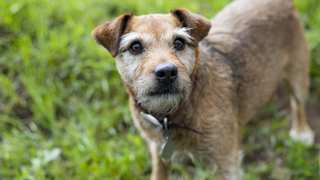Patterdale Terrier Breed Details
The Patterdale Terrier, a member of the Terrier group of breeds, was developed in England in the late nineteenth century to be an agile, durable hunting dog. These athletic little guys are great field companions, of course, but they also make good pets for active singles or busy families. A few facts about the Patterdale Terrier: they're small-sized, with short coats in black or assorted shades of red, and resemble a miniature Labrador Retriever.
PROS:
- Very intelligent
- Extremely good health
- Fairly low-maintenance
- Excellent work ethic
- Good watchdog skills
- Adaptable to most living situations (house or apartment)
- Highly athletic
- Relatively high lifespan (11-13 years)
- Excels in agility and obedience trials
CONS:
- Can be independent and strong-willed
- Tendency for developing Small Dog Syndrome
- Often difficult to train
- Can become destructive if bored
- High exercise requirements
- Don't socialize very well with other pets
- Recommended only for experienced owners
- Socialization with humans and other animals needed







